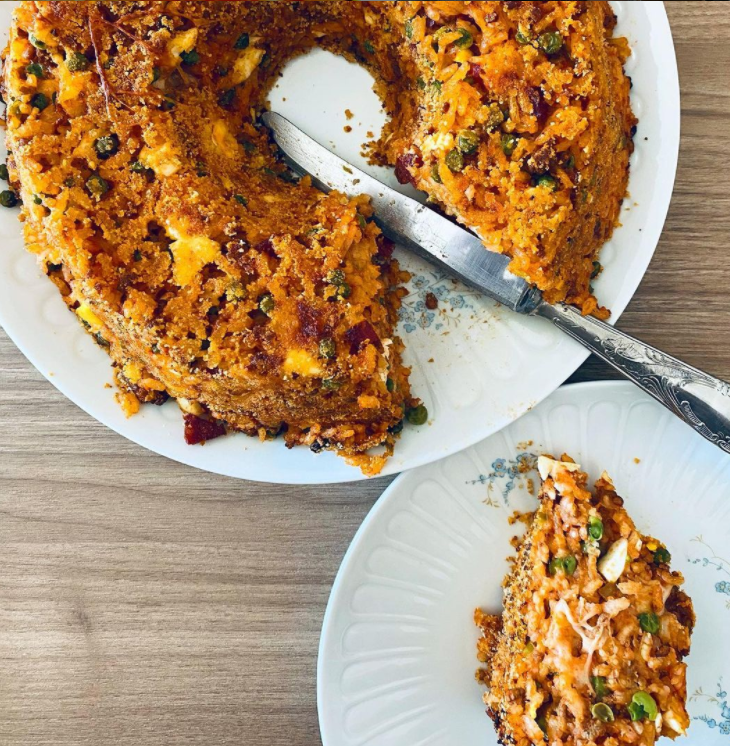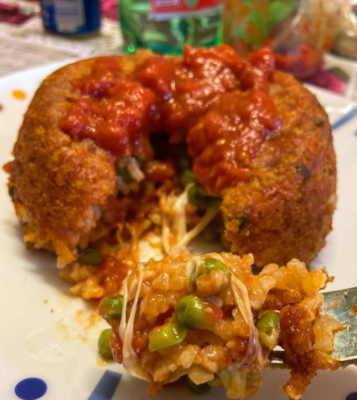Sartù di riso
Sartù di riso, a baked pie with a rich and delicious filling, is certainly one of the most popular traditional dishes in Naples. So what is it? Well, it’s a rice timbale stuffed with peas, hard-boiled eggs, provolone or mozzarella, mushrooms, meatballs, and sausages. The rice sartù is one of the most elaborate and tasty dishes of typical Neapolitan cuisine. The word sartù derives from a distortion by the Neapolitan dialect of the term “sor tout “ (literally “cover everything”) which indicates a special overcoat or “cloak”: in this case, it refers to breadcrumbs which, like a mantle, cover the timbale of rice.



Its origins date back to 1700, to the period in which Ferdinand I of Bourbon, king of the Two Sicilies. Rice arrived for the first time in the Neapolitan city at the end of the 14th century, from Spain, in the holds of the Aragonese ships. But like tomatoes, it was not very successful in the beginning.
At court, it was called sciacquapanza, which translates into poor food. It was used mostly as medicine: the Salerno doctors prescribed it in case of intestinal or gastric diseases (in that period there were epidemics, such as cholera). So it was imported from the South to Northern Italy, where it began to be cultivated.
When Ferdinand I married Maria Carolina of Austria, by the will of the queen, who did not like Neapolitan cuisine, the most famous French cooks arrived at the court. These cooks, aware of the fact that the Neapolitans had a real aversion to rice, decided to make it tastier by adding tomatoes, peas, boiled eggs, mozzarella, meatballs and sausages: all ingredients were then placed in the inside of a rice timbale covered with a mantle of breadcrumbs.
It was a real camouflage to disguise the flavor of the rice. The dish was greatly appreciated by King Ferdinand I, by the nobles and the poor and soon became one of the most loved dishes of Neapolitans. Today it’s considered a culinary tradition.




